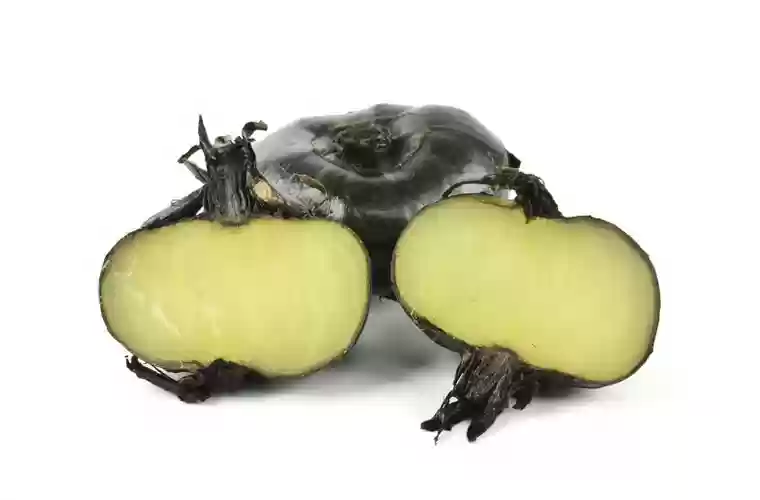Not all heroes wear capes; some lurk beneath the waters, concealed in a cloak of mystery and crisp deliciousness. We present to you the enigmatic entity known as the water chestnut. As we delve into the depths of culinary wonder, a question emerges from the depths of our inquisitive minds: Are water chestnuts, those crunchy companions frequently found in Asian dishes, truly nutty trees? Through a journey of exploration and botanical revelations, we shall unravel the truth behind this aquatic oddity, shedding light on the true nature of these submerged heroes. So, buckle up, curious taste adventurers, for we are about to embark on a waterlogged quest to discern once and for all if water chestnuts belong to the esteemed family of tree nuts.
Introduction
Water chestnuts are a fascinating botanical wonder that often confuses people due to their name. Despite being called “chestnuts,” they are not, in fact, a type of tree nut. These crunchy and delicious aquatic tubers originate from a floating aquatic plant called Eleocharis dulcis. They are a popular ingredient in many Asian cuisines, particularly in stir-fries and salads.
Unlike traditional nuts such as almonds or walnuts, water chestnuts are not a hard-shelled seed. Rather, they are bulbous corms that grow underground, similar to potatoes. With a brownish skin that covers a white, crisp flesh, they have a mild, sweet, and slightly nutty flavor. Water chestnuts are low in calories and fat, making them a healthy addition to any diet. They are a good source of fiber, potassium, and vitamin B6. Their satisfying crunch and refreshing taste make them a popular choice for both savory dishes and desserts.
Incorporating water chestnuts into your cooking can elevate the texture and taste of your dishes. Here are a few features and tips to help you make the most of this unique ingredient:
| Features | Tips |
|---|---|
| Crunchy texture | Try adding water chestnuts to your stir-fries or spring rolls for an added crunch factor. |
| Mild, sweet flavor | Water chestnuts pair well with savory dishes, but can also be used in desserts for a subtle sweetness. |
| Vegan and gluten-free | These tubers are suitable for various dietary restrictions, so they can be enjoyed by many. |
Whether you’re a chef experimenting with new flavors or simply looking to diversify your meals, water chestnuts are a versatile ingredient that can bring a delightful twist to your culinary creations. So, next time you come across these deceptively named “chestnuts,” remember that they are not tree nuts, but rather a unique and tasty tuber that might just become a new favorite in your kitchen.

Origin and Characteristics of Water Chestnuts
| Features | Tips |
|---|---|
| Crunchy texture | Water chestnuts are best enjoyed when they maintain their firm texture. To achieve this, try blanching them quickly in boiling water before adding to your favorite stir-fries or salads. |
| Distinct flavor | Water chestnuts offer a subtly sweet and nutty taste, which adds a delightful twist to various dishes. For enhanced flavor, try marinating them in a mixture of soy sauce, ginger, and garlic before cooking. |
| Low in calories | If you’re watching your calorie intake, water chestnuts make an excellent choice. With just 60 calories per cup, they can contribute to a healthy and balanced diet. |
Water chestnuts, despite their name, are not actual tree nuts. Rather, they are aquatic vegetables commonly found in East Asia. These small, round tuber-like plants are known for their distinctive taste and crunchy texture, adding a unique element to various culinary creations.
One of the remarkable characteristics of water chestnuts is their ability to retain their crunch even after cooking. This texture makes them a popular choice in stir-fries, salads, and other dishes where a satisfying crunch is desired. To ensure their unbeatable crunchiness, blanching them briefly before cooking is a helpful tip.
Apart from their captivating texture, water chestnuts also possess a subtly sweet and nutty flavor. This characteristic taste can elevate the overall taste profile of your recipes, making them more interesting and enjoyable. A recommended way of enhancing their flavor is to marinate them in a mixture of soy sauce, ginger, and garlic before incorporating them into your dishes.
What’
s even more appealing about water chestnuts is their low-calorie content. For those seeking a guilt-free indulgence, these aquatic vegetables contain just around 60 calories per cup, making them an excellent choice for maintaining a healthy and balanced diet.In conclusion, water chestnuts provide a unique combination of crunchiness, taste, and nutrition. While they may not be tree nuts, their origin and characteristics make them a delightful addition to any culinary adventure. So go ahead, explore the world of water chestnuts and discover the endless possibilities they bring to your kitchen.
Are Water Chestnuts a Tree Nut?
Water chestnuts are a fascinating ingredient that often makes its way into various Asian cuisines. But are they actually considered a tree nut? Surprisingly, no! Despite their name, water chestnuts are not nuts at all, but rather aquatic vegetables belonging to the sedge family. These crunchy delights grow underwater, resembling a small, bulbous tuber with a tough brown skin and a mildly sweet and nutty flavor.
One of the
appealing aspects of water chestnuts is their versatility in cooking. They can be enjoyed raw, providing a refreshing and crisp bite, or added to stir-fries, soups, and salads for an extra dimension of texture and flavor. However, it’s important to note that although water chestnuts themselves are not tree nuts, cross-contamination could be a concern if they are processed in facilities that handle tree nuts. So, individuals with tree nut allergies should exercise caution and check the label or consult with food manufacturers to ensure their safety.For those eager to explore the wonders of water chestnuts, here are some helpful features and tips to enhance your culinary experience:
| Features | Tips |
|---|---|
| ? Crunchy texture | ⭐️ When adding water chestnuts to stir-fries, cook them briefly to preserve their delightful crunchiness. |
| ? Low in calories and fat | ⭐️ Incorporate water chestnuts into your healthy salads for added nutritional value without compromising flavor. |
| ? Natural thickening agent | ⭐️ Blend water chestnuts with a small amount of water to create a thick paste that can be used as a sauce thickener. |
With their unique taste and texture, water chestnuts are sure to surprise and delight your taste buds. So, go ahead and explore the wonderful world of these aquatic gems in your culinary endeavors, while not confusing them with actual tree nuts. Happy cooking!


